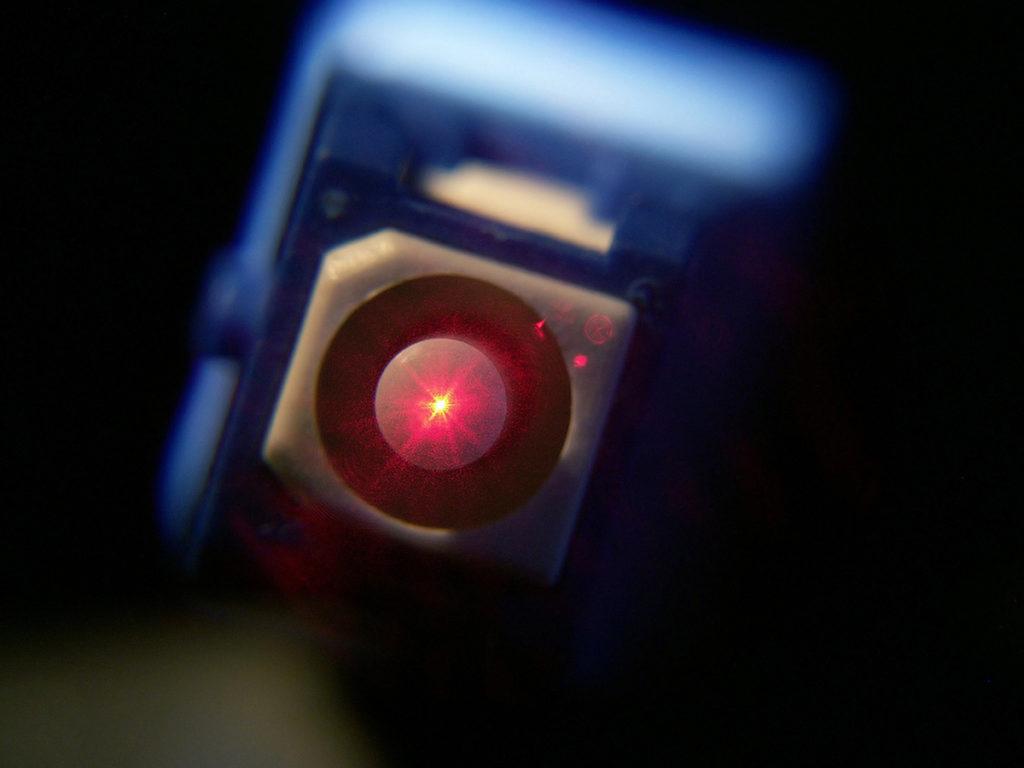Technology
Smart Surgical Laser Device
Overview
There are three main components of our smart surgical device: the laser, sensors, and feedback system.
Many types of laser devices are used to demonstrate a laser function of seal or cut on various tissues or organs. However, it is important to develop an optimal process of laser sealing or cutting of tissue to minimize bleeding, prevent tissue damage, and reduce operation times. The focus of SharpArrow is to design a smart surgical laser device with four different operating modes:
- Seal followed by cut
- Seal only
- Cut followed by seal
- Simultaneous seal and cut
Multifunctional Lasers
Observations from our tests from initial beef and liver tissue tests show that each surgical laser operation modes is expected to produce a different outcome. Our current concept utilizes two lasers and three sensors to seal and cut a tissue sample. The sealing laser coagulates tissue, closing up all small blood vessels. On the other hand, the cutting laser lacerates tissue.
During our experiments, we used a:
- 30W, fiber-coupled, holmium YAG laser for tissue cutting
- 80W, 980nm, fiber-coupled diode laser for tissue sealing
Both lasers are coupled with focusing lenses to control beam sizes and change light intensity in pulse, continuous wave (CW), or burst mode. They will be fired in different sequences or simultaneously fired for an interval of time to achieve optimal sealing and/or cutting.

Accurate Sensors
In addition to our dual-laser system, the SharpArrow surgical laser utilizes three sensors, measuring key parameters for optimal sealing and cutting operations.
Light Reflection
The energy optical feedback and tissue response sensor detects the amount of energy scattered from the tissue while the tissue is exposed to a high-power infrared laser. The sensor monitors the fiber-coupled coagulation diode laser, using a commercially available photodiode as a sensor detector.
Distance Proximity
The distance proximity sensor is used to accurately measure the distance between the distal end of the optical fiber and target tissue. This information is necessary to determine the spot size of the laser beams at the tissue surface, which is important for proper determination of both tissue cutting and coagulation.
Surface Temperature
The non-contact temperature sensor measure the temperature of tissue via optical fibers. Two different detectors are currently being evaluated, a mid-IR infrared detector and an infrared thermopile sensor. Typically, these devices require a direct line-of-sight optical path to measure temperature.
Calibrated Control System

Based on these sensor data and laser parameters, the following information are obtained:
- Thermal volume
- Tissue conditions
- Laser intensity
- Surface temperatures
- Surface bleeding conditions
Synchronization of all data from our sensors is interpreted by an onboard computer. Many factors affect the signals from the optical fiber-guided sensors, especially the presence of water and blood. In addition to these variables, tissue type variations due to the amount of fat present also affect sensor signal stability. The onboard computer accurately measures and compensates for all these variations. We are currently developing the software algorithm based on the results from our laser-tissue interaction experiments.
